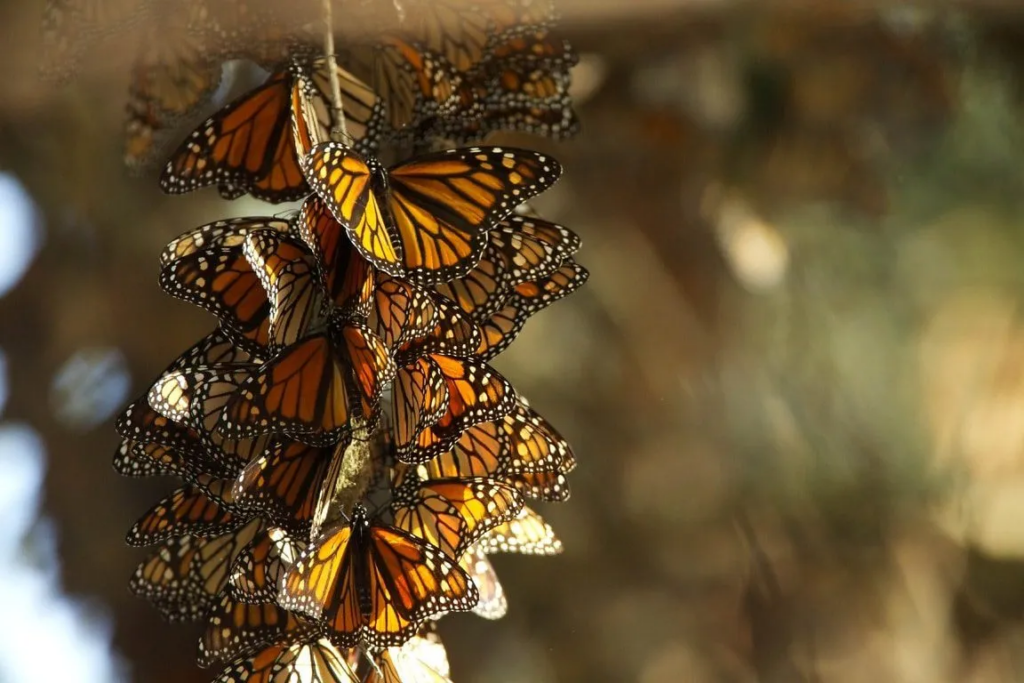There was a 22% decrease in the number of monarch butterfly hibernating in Mexican forests last year. According to an annual report, the number of trees lost from their favoured grounds tripled. A role played by frost & “extreme temperatures” in the US during the most recent winter season may have been responsible for the decline of butterflies.

Drought, severe weather, habitat loss, pesticide & herbicide use, & climate change have caused a drop in the number of monarch butterflies. The migration of monarchs from Mexico & California to summer breeding grounds in the US & Canada happens each year.
According to the IUCN (International Union for Conservation of Nature , the population of monarchs has decreased between 22% & 72% over the past decade. There was a drop in the western population from 10 million butterflies in the 1980s to just 1,914 monarch butterflies in 2021.
The fir forests of the western state of Michoacan, west of Mexico City, attract monarchs east of the Rocky Mountains in the US & Canada during winter. Last year, the total area they occupied over the past winter dropped to 5.4 acres (2,21 hectares), from 7 acres (2,84 hectares ).
There is a risk of sharp population decline in the Eastern migratory monarch butterfly & a loss of habitat in the forests where they winter each year. Eastern monarch butterflies travel up to 2,800 miles from Canada & the US to their wintering sites in the forests of Mexico, every year.
The requirement of Monarchs is a vast, healthy migratory path & large, robust forests for survival through the winter. A major threat to the pine & fir forests where the butterflies gather in clumps to keep warm has been illegal logging. Removal of diseased trees has been used as a pretext for felling healthy trees for timber in the past, the critics say.
Two new reports were released by the WWF-Mexico & its partners relating to the population & winter habitat of the Eastern migratory monarch butterfly. Forest Area Occupied by Monarch Butterflies Colonies in Mexico measures the area of forest in which monarch butterflies hibernate each winter, according to the annual WWF-Mexico-led survey.
The report for 2022- 2023 shows a 22% decline in forest area when compared to last year. The governments of the US, Canada, & Mexico are called on by the WWF to ensure a safe & healthy future for monarchs & their habitats.


















